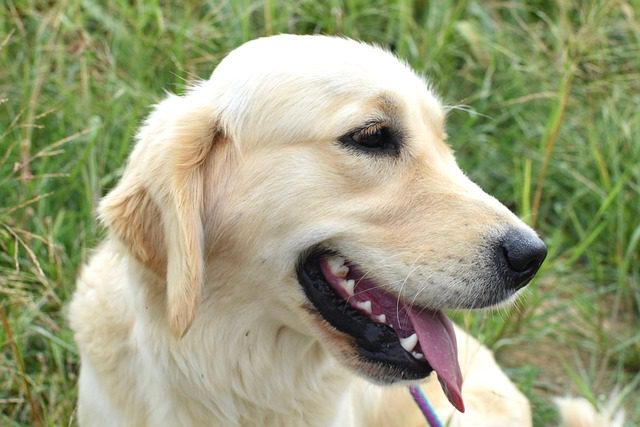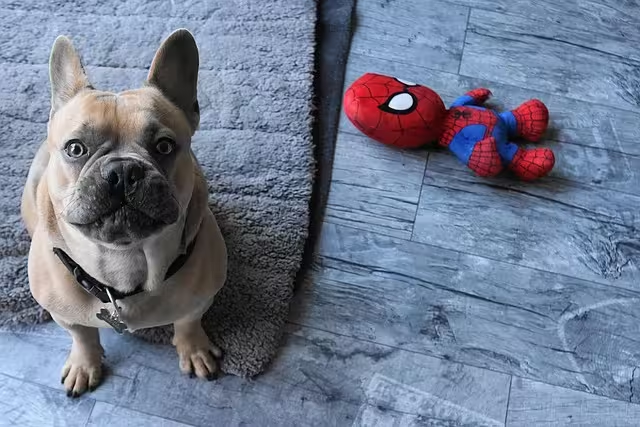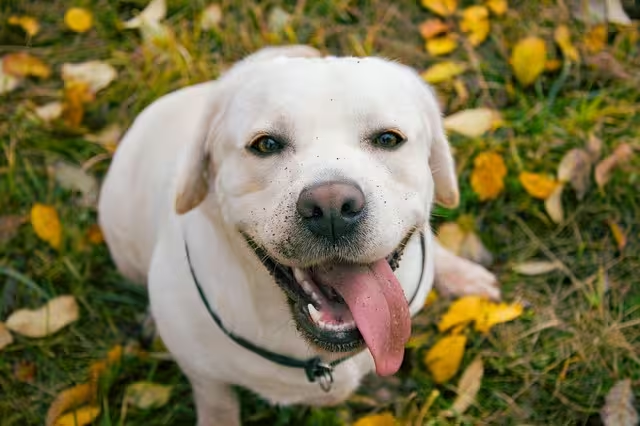When it comes to popular dog breeds, Golden Retrievers consistently rank among the top choices for families and individuals alike· Renowned for their friendly nature, intelligence, and loyalty, these dogs make excellent companions· However, one of the common challenges that prospective Golden Retriever owners should consider is shedding· With their beautiful double coat, these dogs can contribute to a fair amount of fur around the house· Understanding how to manage shedding effectively can lead to a more harmonious living environment and a happier relationship with your furry friend· This blog will explore the reasons behind shedding in Golden Retrievers and provide practical tips for managing their double coat·
Understanding the Double Coat
The Structure of a Golden Retriever’s Coat
Golden Retrievers have a unique double coat that consists of two layers: a dense undercoat and a water-repellent outer coat· The undercoat is soft and fluffy, providing insulation and warmth· In contrast, the outer coat is longer and coarser, designed to protect the dog from the elements· This double coat serves an essential purpose, particularly for a breed that was originally bred for retrieving game in various weather conditions·
Shedding Patterns
Shedding is a natural process for all dogs, but Golden Retrievers tend to shed more than some other breeds· They typically shed year-round, with heavier shedding occurring during seasonal changes, particularly in spring and fall· This phenomenon, known as “blowing coat,” occurs as the undercoat is replaced, leading to a noticeable increase in loose fur around your home·
Common Challenges of Shedding
Excessive Fur Around the House
One of the most immediate challenges of owning a Golden Retriever is managing the fur that accumulates in your home· Shedding can lead to fur-covered furniture, clothing, and flooring, which can be frustrating for pet owners, especially those with allergies or sensitivities to pet dander·
Allergies and Respiratory Issues
For some individuals, pet hair and dander can exacerbate allergies or respiratory issues· It’s important to take proactive measures to minimize shedding and danger to create a comfortable living environment for everyone in the household·
Time and Effort for Grooming
Maintaining a Golden Retriever’s coat requires a time commitment, as regular grooming is essential to manage shedding· Without proper grooming, the coat can become matted and tangled, leading to discomfort for the dog and increased shedding·
Tips for Managing Shedding
Regular Brushing
One of the most effective ways to manage shedding is through regular brushing· Aim to brush your Golden Retriever at least once or twice a week, and increase the frequency during shedding seasons· Using a quality slicker brush or an undercoat rake can help remove loose fur and prevent matting· Brushing not only helps to manage shedding but also promotes healthy skin and coat by distributing natural oils·
Bathing and Grooming
Bathing your Golden Retriever can help reduce shedding by loosening dead hair and dander· However, be cautious not to bathe them too frequently, as over-bathing can strip the coat of its natural oils· A good rule of thumb is to bathe your dog every 6 to 8 weeks, or as needed· Use a gentle dog shampoo specifically formulated for their coat type to maintain its health and luster·
Professional Grooming
If you’re feeling overwhelmed by the grooming process or if your Golden Retriever’s coat becomes particularly unruly, consider seeking the help of a professional groomer· A groomer can provide a thorough grooming session, including deshedding treatments that can significantly reduce loose hair· Regular visits to a groomer can also help keep your dog’s coat healthy and manageable·
Diet and Nutrition
A healthy diet plays a vital role in maintaining a Golden Retriever’s coat· Ensure your dog is receiving a balanced diet rich in essential fatty acids, such as omega-3 and omega-6· These nutrients promote a healthy coat and can reduce excessive shedding· Consult with your veterinarian to determine the best diet for your dog’s specific needs·
Create a Cleaning Routine
To manage the fur that does escape your grooming efforts, establish a regular cleaning routine· Invest in a high-quality vacuum cleaner designed to handle pet hair, and consider using lint rollers or pet hair removers on furniture and clothing· Regularly washing your dog’s bedding and blankets can also help minimize dander and fur in your home·
Control Indoor Environment
Reducing the amount of fur in your home may also involve controlling the indoor environment· Consider using air purifiers with HEPA filters to capture pet dander and allergens· Keeping windows open for ventilation when weather permits can also help reduce indoor allergens· Additionally, designating specific areas in your home for your Golden Retriever can help contain shedding to certain spaces·
Hydration and Skin Health
Keeping your Golden Retriever well-hydrated is essential for maintaining healthy skin and coat· Ensure they have access to fresh water at all times and monitor their water intake, especially during warmer months· Proper hydration can help reduce dry skin and minimize shedding·
Addressing Separation Anxiety: Training and Coping Strategies for Dog Breeds
As a dog owner, one of the most challenging aspects of having a pet can be dealing with separation anxiety· This condition affects many dog breeds, including the ever-popular Golden Retriever, known for their affectionate and loyal nature· While it’s natural for dog breeds to feel a bit uneasy when their owners leave, severe separation anxiety can lead to destructive behaviors, excessive barking, and other stress-related issues· Understanding how to address this anxiety through effective training and coping strategies can significantly improve your dog’s quality of life and strengthen your bond· In this blog, we will explore ways to manage separation anxiety in dogs, focusing on practical strategies for training and coping·
Understanding Separation Anxiety
What Is Separation Anxiety?
Separation anxiety is a behavioral issue that occurs when a dog breeds becomes overly attached to their owner and experiences distress when left alone· Dogs suffering from separation anxiety may exhibit various symptoms, including:
Excessive barking or howling
- Destructive behaviors, such as chewing furniture or scratching doors
- Pacing or restlessness
- Accidents in the house, even if they are house-trained
- Attempts to escape from confinement
- Recognizing these signs is crucial for addressing the problem effectively·
Why Do Dogs Experience Separation Anxiety?
Several factors can contribute to the development of separation anxiety in dogs· Common reasons include:
- Traumatic Experiences: Dogs that have experienced abandonment, neglect, or abuse may develop anxiety when left alone·
- Changes in Routine: Sudden changes in the household, such as moving, the arrival of a new family member, or changes in work schedules, can trigger anxiety·
- Lack of Socialization: Insufficient exposure to different environments and experiences during critical developmental periods can lead to heightened anxiety·
Understanding the underlying causes of separation anxiety in your dog is essential for developing effective training and coping strategies·
Training Strategies to Address Separation Anxiety
Gradual Desensitization
One of the most effective training techniques for managing separation anxiety is gradual desensitization· This method involves slowly helping your dog become accustomed to being alone· Start by leaving your dog alone for short periods and gradually increasing the duration as they become more comfortable· Here’s a step-by-step approach:
- Start Small: Begin by leaving your dog alone for just a few minutes· Choose a calm time when your dog is relaxed·
- Gradually Increase Time: As your dog becomes comfortable with short separations, gradually extend the time you are away· Aim for longer durations while ensuring your dog remains calm·
- Monitor Behavior: Observe how your dog breeds reacts during these separations· If they show signs of distress, reduce the time and start again·
- Create Positive Associations: Use treats, toys, or a favorite blanket to create positive associations with being alone· This can help your dog feel more secure during separations·
Training Commands and Commands
Incorporating basic obedience training can also help manage separation anxiety· Teaching your dog commands such as “stay” or “go to your place” can create a sense of structure and security· Here are some tips for implementing these commands:
- Practice “Stay”: Train your dog breeds to stay in a designated area while you move away· Start with short distances and gradually increase the distance as your dog becomes more comfortable·
- Create a Safe Space: Designate a specific area in your home where your dog can feel secure when you leave· This could be a crate, a cozy corner with their bed, or a confined space with their favorite toys·
- Use Positive Reinforcement: Reward your dog with treats and praise when they successfully follow commands or remain calm during your absence· Positive reinforcement encourages desired behaviors and builds confidence·
Counterconditioning
Counterconditioning is another effective strategy for addressing separation anxiety· This technique involves changing your dog’s emotional response to being alone· Here’s how to implement counterconditioning:
- Identify Triggers: Determine what specific cues trigger your dog’s anxiety, such as picking up your keys or putting on your shoes·
- Create a Calm Environment: Before leaving, engage your dog in an enjoyable activity, such as playing with a favorite toy or providing a puzzle feeder· This helps divert their attention from your departure·
- Gradual Exposure: Practice the triggers without leaving, gradually exposing your dog to the cues that typically signal your departure· Reward them for staying calm during this process·
Coping Strategies for Separation Anxiety
Establish a Routine
Creating a consistent daily routine can help alleviate anxiety in dogs· Dogs thrive on predictability, and knowing what to expect can provide a sense of security· Establish regular feeding, walking, and playtime schedules to help your dog feel more at ease·
Provide Mental Stimulation
Keeping your dog mentally engaged can reduce anxiety and boredom· Consider incorporating activities such as puzzle toys, interactive games, and training sessions into your daily routine· Mental stimulation helps distract your dog breeds from feelings of anxiety and can promote a sense of calm·
Consider Calming Aids
In some cases, calming aids may help alleviate separation anxiety· Options include:
- Anxiety Wraps: These garments apply gentle pressure to your dog’s body, providing a sense of security and comfort·
- Calming Supplements: Natural supplements containing ingredients like chamomile or valerian root may promote relaxation· Always consult your veterinarian before introducing any supplements·
- Pheromone Diffusers: Products that release calming pheromones can create a soothing environment for your dog breeds·
Practice Leaving and Arriving Calmly
How you handle your departures and arrivals can impact your dog’s anxiety levels· Practice leaving and returning home calmly without making a fuss over your dog· This helps your dog understand that your departures and arrivals are normal and not a cause for distress·
Seeking Professional Help
If your dog’s separation anxiety persists despite your best efforts, consider seeking the guidance of a professional dog trainer or behaviorist· These experts can assess your dog’s specific situation and develop a tailored training plan to address separation anxiety effectively·
Handling High Energy Levels in Dog Breeds: Ensuring They Get Enough Exercise
When it comes to owning a dog breeds, one of the most important factors to consider is the energy level of the specific dog breeds you are interested in· Certain breeds, such as the Golden Retriever, Border Collie, and Siberian Husky, are renowned for their high energy and need for regular exercise· Failing to provide adequate physical activity for these energetic companions can lead to behavioral issues, anxiety, and a less fulfilling life for both the dog and their owner· Understanding how to manage your dog’s energy levels while ensuring they receive enough exercise is crucial for a happy and healthy relationship·
Understanding High Energy Levels
Why Some Dog Breeds Are More Energetic
High energy levels in dogs can be attributed to their genetic makeup and purpose for which they were bred· Working breeds and sporting breeds, such as Golden Retrievers and Labrador Retrievers, were developed for tasks that require stamina, agility, and strength· These dogs have physical and mental needs that must be met to prevent pent-up energy from manifesting in destructive behaviors·
Signs of Excess Energy
Recognizing the signs of excess energy in your dog is essential for determining how much exercise they need· Common behaviors indicating a need for more activity include:
- Excessive barking or whining
- Chewing furniture or household items
- Jumping on people or furniture
- Pacing or restlessness
- Difficulty focusing during training sessions
If you notice these signs, it may be time to reassess your dog’s exercise routine·
Creating an Effective Exercise Regimen
Daily Exercise Requirements
Most high-energy dog breeds require at least 60 to 120 minutes of exercise each day, though this can vary depending on the individual dog and their age, health, and temperament· It’s essential to break this exercise into multiple sessions throughout the day to keep your dog engaged and prevent boredom·
Types of Exercise
To keep your dog physically and mentally stimulated, incorporate a variety of exercise activities into their routine:
- Walking and Jogging: Regular walks are essential for all dog breeds, but energetic breeds may benefit from longer, more vigorous walks or jogs· Aim for at least one to two walks a day, gradually increasing the distance as your dog builds stamina·
- Playtime: Engaging in interactive playtime, such as fetch or tug-of-war, can help burn off excess energy· These activities not only provide physical exercise but also strengthen the bond between you and your dog·
- Agility Training: Setting up an agility course in your backyard or attending a local agility class can challenge your dog both physically and mentally· This type of training encourages focus and discipline while providing a fun outlet for energy·
- Swimming: Many dogs love to swim, and this low-impact exercise is perfect for high-energy breeds· Swimming provides a full-body workout and is easy on their joints, making it an excellent option for dogs of all ages·
- Mental Stimulation: Incorporating mental challenges into your dog’s routine can help tire them out just as effectively as physical exercise· Puzzle toys, obedience training, and scent work are excellent ways to engage your dog’s mind·
Socialization Opportunities
Enabling your dog breeds to socialize with other dogs can also provide them with beneficial exercise and mental stimulation· Regular visits to a dog park or playdates with other dogs can help your dog expend energy in a controlled environment· Be sure to supervise playtime to ensure safety and positive interactions·
Establishing a Routine
Consistency is Key
Establishing a consistent exercise routine is vital for managing your dog’s energy levels· Dogs thrive on predictability, and a regular schedule will help them understand when to expect physical activity·
Tailoring to Your Dog’s Needs
Every dog is unique, and it’s essential to tailor their exercise regimen to their specific needs· Factors such as age, health, and individual temperament can influence how much exercise your dog breeds requires· Be observant and adjust their routine as necessary to ensure they remain happy and healthy·
Conclusion
Handling the high energy levels of certain dog breeds requires dedication and understanding· By providing adequate exercise and mental stimulation, you can effectively manage your dog’s energy levels, promoting a happier, healthier lifestyle for both you and your furry companion·
Remember that consistency and variety are key components of a successful exercise routine· By engaging in different activities and spending quality time with your dog, you’ll not only help them expend energy but also strengthen your bond· Embrace the joy and fulfillment that comes with owning a high-energy dog breeds, and watch as your efforts lead to a well-adjusted and content canine companion·









